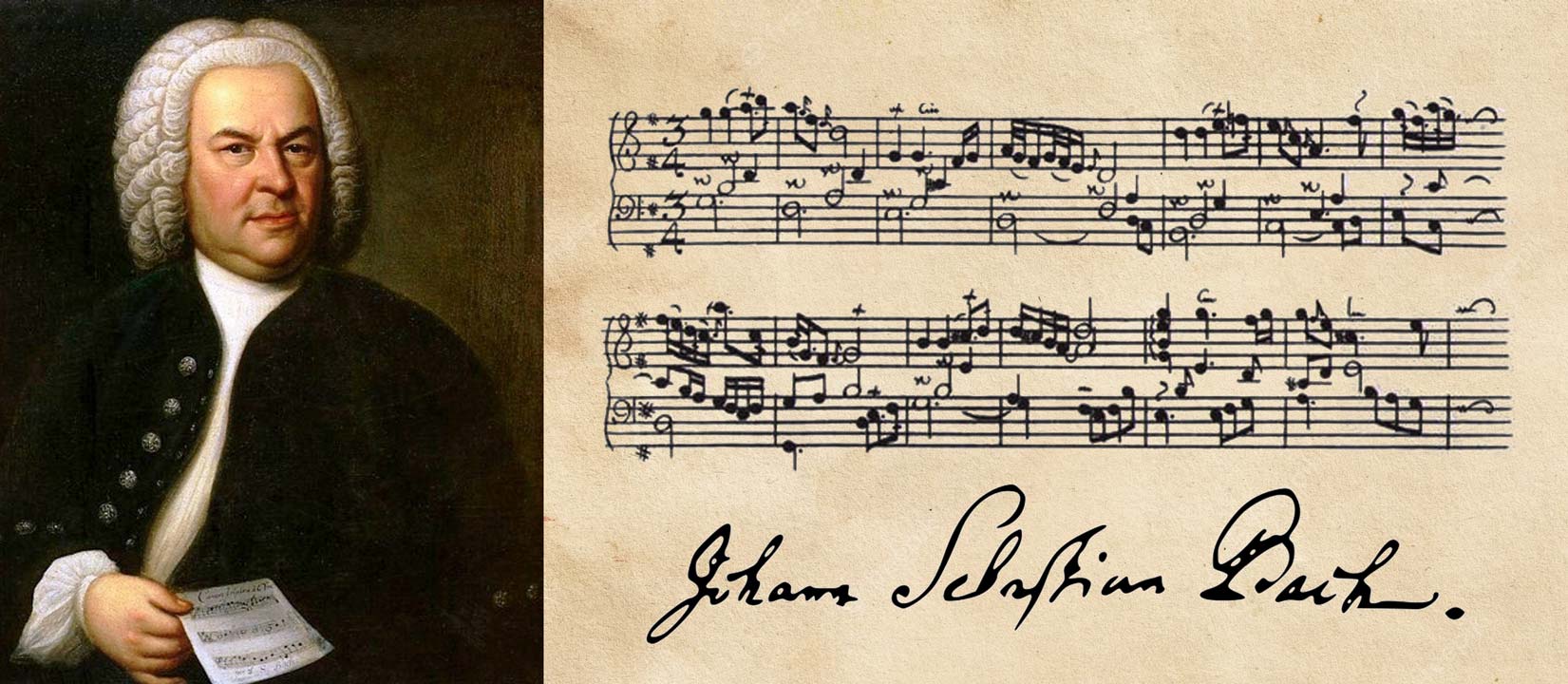A Daily Dose of Bach? – Access his Complete Scores on Piano Street
Johann Sebastian Bach’s keyboard music is some of the most essential repertoire for pianists, although he lived before the era of the modern piano. And you don’t need to look any further than Piano Street: our library of sheet music by Bach – 250 pieces waiting to be explored – is now complete.
Many musicians and composers have made a point of spending time with Bach every single day: Andras Schiff, Angela Hewitt, Pablo Casals, Christopher Hogwood, Robert Schumann, Richard Wagner, Igor Stravinsky… All these reportedly play(ed) Bach as part of their daily morning routine, in order to find both inspiration and peace of mind. If you would like to do the same, but are not yet able to play all the Bach pieces you would like to, I’m sure a daily dose of our Audiovisual Study Tool (AST) would be a good complement. Imagine what would happen to you if you listened to one Bach piece a day for 250 days while following along in the score!
The Encyclopedic Composer
Bach would often compose tailor-made pieces for his students, which is why we find such a great range of works by him that are accessible, beautiful, and very rewarding. There is a Bach piece for everyone, no matter your skill level. From the easiest Minuets and small Preludes all the way up to the relentlessly intricate architecture of the Goldberg Variations, we find countless examples of his ability to mix simplicity with sophistication.
His extremely structured and analytical mind is reflected in his work list. Perhaps the greatest example is the Well-Tempered Clavier with its preludes and fugues in all major and minor keys, dubbed the “Old Testament of piano music”. An unsurpassed intellectual feat (which he accomplished twice!) and an encyclopedia of Baroque music, in terms of composition techniques, musical devices, genres, characters, and emotional content.
There are many other examples of Bach repeating himself without ever getting repetitive. His Suites come in sets of six (6 French Suites, 6 English Suites, 6 Partitas); all of them feature allemandes, courantes, sarabandes, gigues, etc, in more or less the same order. But the conformity lies only in the titles and musical forms: Bach’s richness of invention is evident everywhere.
Getting to know Bach’s style
The skillful handling of several voices in counterpoint is perhaps the most obvious feature of Bach’s style. That is also why he is the go-to composer if you want to develop your coordination and finger independence. A classical piano education typically includes a lot of Bach playing, starting with easy preludes and dance movements. For contrapuntal playing (multiple independent melodic lines), one often starts with the Inventions (2 voices) and Sinfonias (3 voices); then you move on to the Well-Tempered Clavier (up to 5 voices).
Among the dance suites, there is a similar scale of progression – it’s usually recommended to start with the French Suites where it’s easier to find intermediate pieces. To play an entire English Suite or Partita you need to be quite advanced, but there are individual movements that many would rate as easy.
Bach’s scores are often very sparse when it comes to instructions regarding tempo, dynamics, articulation etc. So how is one supposed to know how to play? There are several long answers to this question, or rather many intricate ongoing discussions… The short answer is that you need to know his style, and the best way of getting to know it is to study and listen to as many of his works as possible. Our complete Bach keyboard music library and AST section is a great tool for that. We wish you many happy hours with Johann Sebastian!
Reader question: Which is your favourite Bach solo keyboard piece?
Please post your reply in the comment section below!
Write a reply or comment
Forum comments:

Comments
There are so many great pieces by Bach but if I must choose one today I would say the E-flat minor Prelude from DWK 1 is my absolute favorite. Tomorrow I might choose another one.
All. If he had lived in the 20th century, he would have been a rocker.
Thanks you, this is a truly great resource!
My no 1 piece is the Partita 1 in B-flat major. I love it, both to play it and to listen to it.
Italian Concerto
The pinnacle of all keyboard compositions — The Goldberg Variations
Goldberg Variations
Prelude in C, Well Tempered Klavier
The Aria of the Goldberg Variations today…
Favourite piece :
Gigue in Bb : perfect composition exploring the Bb tonality
French Suite No. 5
Absolutely all! It will take a long essay to list the favorites and why… but I have to say, my all time favorite is es moll prelude and fugue from volume 1. I like it because, It is very melodic and requires lots of thinking.
The greatness of this Genius is that not only all his compositions are wonderful but also playable on any klavier.
However, I am enjoying his great “monuments” better on the organ and the piece I share is the Prelude and fugue BWV 552 from the Clavier-Übung III.
BWV846 the Prelude in C major might be the perfect piece of music. It has a cosmic completeness to it and now that I have memorized the fingerings I can just float away with the harmonic progressions as I play it.
I have an electronic keyboard and it works with any voice.
It is music but it is a meditation on the wonderful things that human beings in their best moments are b
Partita No. 2
Concerto in d minor, Art of Fugue